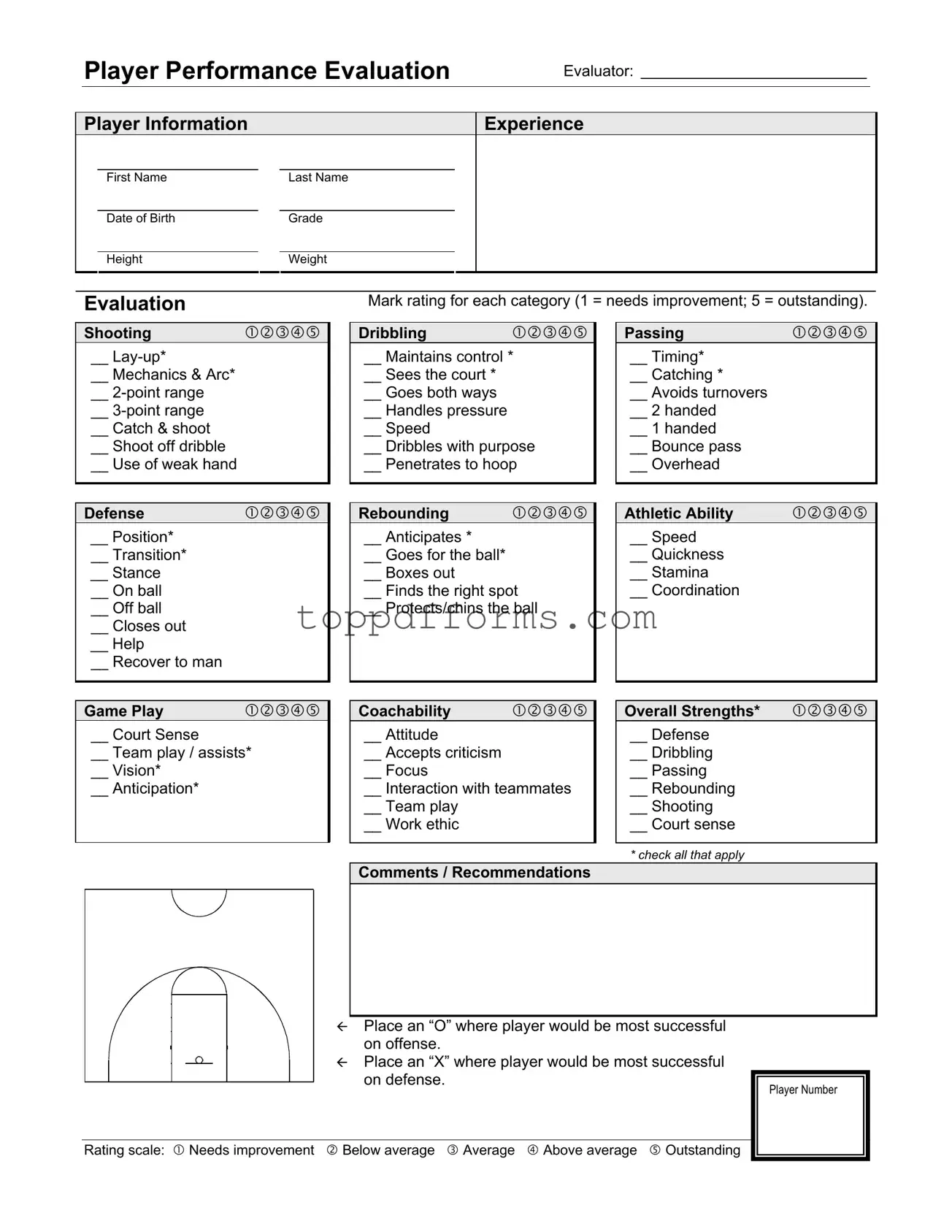What is the purpose of the Basketball Evaluation form?
The Basketball Evaluation form is designed to assess a player's skills and performance in various areas of the game. Coaches and evaluators use this form to provide a comprehensive overview of a player's strengths and areas for improvement. This helps in making informed decisions regarding player development and team placements.
Who fills out the Basketball Evaluation form?
The form is typically filled out by coaches or evaluators who have observed the player's performance during practices or games. Their insights are crucial in providing an accurate assessment of the player's abilities and potential.
What categories are included in the evaluation?
The evaluation covers multiple categories, including shooting, defense, dribbling, rebounding, passing, athletic ability, game play, and coachability. Each category consists of specific skills that players are rated on, allowing for a detailed analysis of their overall performance.
How is the rating system structured?
Players are rated on a scale from 1 to 5 in each category. A rating of 1 indicates that the player needs improvement, while a rating of 5 signifies outstanding performance. This scale helps to clearly communicate the evaluator's assessment and highlights areas for growth.
What do the symbols "O" and "X" signify on the form?
The evaluator is instructed to place an "O" in the area where the player would be most successful on offense and an "X" where the player would excel on defense. This visual representation aids in quickly identifying the player's strengths in both offensive and defensive roles.
Can comments and recommendations be added to the form?
Yes, there is space provided for comments and recommendations. Evaluators can use this section to elaborate on specific observations or suggest areas for improvement. This personalized feedback is invaluable for players and coaches alike.
How does the evaluation impact a player's development?
The evaluation serves as a foundational tool for a player's development. By identifying strengths and weaknesses, coaches can tailor training programs to address specific needs. Additionally, it can influence team selections and strategies, ensuring that players are positioned where they can thrive.
Is the evaluation form used for all age groups?
While the form can be adapted for various age groups, it is commonly used for youth and high school basketball players. The structure remains consistent, but evaluators may adjust their expectations based on the player's age and experience level.
How often should evaluations be conducted?
Evaluations should ideally be conducted regularly throughout the season, especially after key games or training sessions. Frequent assessments allow for tracking progress over time and ensuring that players receive ongoing feedback to enhance their skills.
